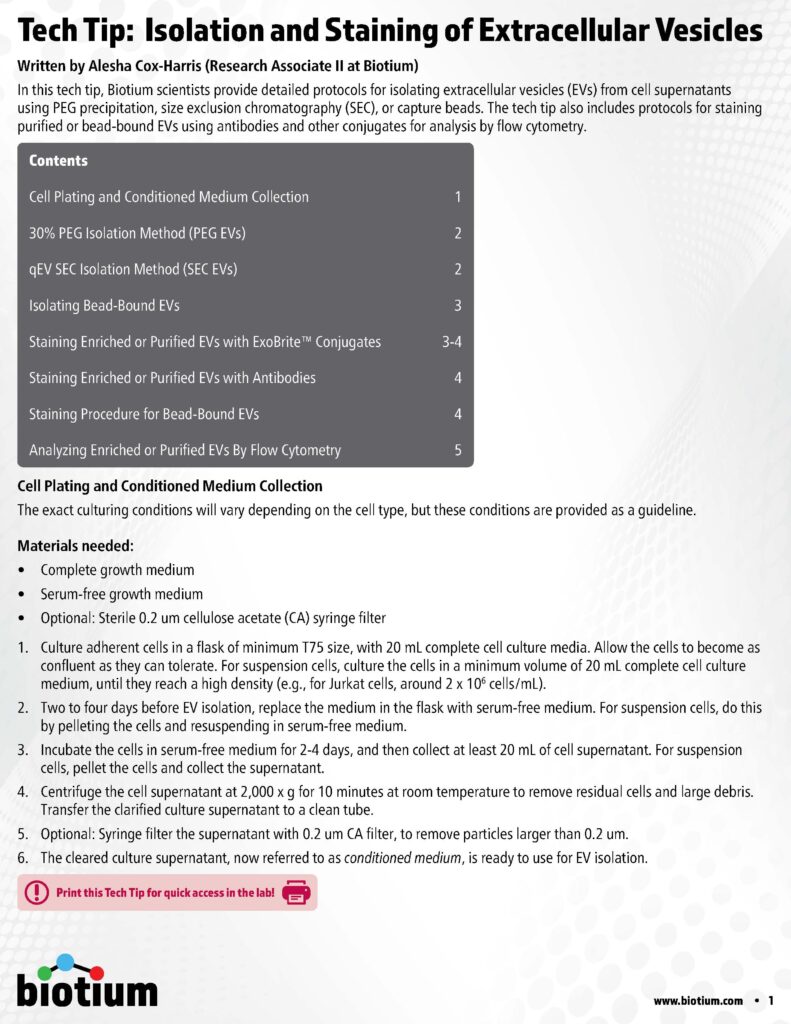Extracellular vesicles (EVs) are small, membrane-bound particles secreted from cells and thought to function as cellular messengers, carrying cargo from one cell to another. In biomedical research, EVs and their cargo are used as diagnostic biomarkers for cancer and other diseases. However, the isolation and detection of EVs can be extremely challenging due to their small size (~30-200 nm in diameter, similar to most viruses). New methods and tools are constantly being developed but it can be difficult to know which to use.
In this tech tip, Biotium scientists provide detailed protocols for isolating EVs from cell supernatants using PEG precipitation or size exclusion chromatography (SEC). The tech tip also includes protocols for staining purified or bead-bound EVs using dyes and antibodies for analysis by flow cytometry. For more tips on EV staining and detection by flow cytometry, read our Tech Tip: Fluorescent Detection of EVs by Flow Cytometry.
The article includes:
- Step-by-step procedures for EV isolation by PEG isolation or size-exclusion column
- Step-by-step procedures for staining enriched or purified EVs with antibodies or fluorescent dyes
- Tips for analyzing enriched or purified EVs by flow cytometry
- Procedure for isolating and staining bead-bound EVs

